Preface
Table of Contents
1 What is Microsoft Dynamics 365/AX?
1.1 Dynamics 365, Dynamics AX and Axapta
1.2 Dynamics 365 for Finance and Operations at a Glance
1.2.1 Functional Capabilities
1.2.2 Implementation
1.2.3 Data Structure
1.2.4 Voucher Principle
2 Getting Started: Navigation and General Options
2.1 User Interface and Common Tasks
2.1.1 Login and Authentication
2.1.2 Navigation
2.1.3 Elements of the User Interface
2.1.4 Working with Records
2.1.5 Filtering and Sorting
2.1.6 Help System
2.1.7 Case Study Exercises
2.2 Printing and Reporting
2.2.1 Printing Documents
2.2.2 Microsoft Office Integration
2.2.3 Case Study Exercise
2.3 Advanced Options
2.3.1 User Options and Personalization
2.3.2 Record Information and Templates
2.3.3 Case Study Exercises
2.4 Global Address Book
2.4.1 Parties and Addresses
2.4.2 Address Books
2.4.3 Case Study Exercise
3 Purchase Management
3.1 Business Processes in Purchasing
3.1.1 Basic Approach
3.1.2 At a Glance: Purchase Order Processing
3.2 Vendor Management
3.2.1 Vendor Records
3.2.2 Payment Terms and Cash Discounts
3.2.3 Ledger Integration
3.2.4 Case Study Exercises
3.3 Product Management in Purchasing
3.3.1 Product Categories and Procurement Categories
3.3.2 Basic Product Data
3.3.3 Purchase Price Setup
3.3.4 Case Study Exercises
3.4 Purchase Order Management
3.4.1 Basics of Purchase Order Processing
3.4.2 Purchase Order Registration
3.4.3 Change Management and Purchase Order Approval
3.4.4 Canceling and Deleting Purchase Orders
3.4.5 Purchase Inquiries and Order Confirmations
3.4.6 Case Study Exercises
3.5 Item Receipts
3.5.1 Basics of Item Receipts
3.5.2 Receipts Lists
3.5.3 Inventory Registration
3.5.4 Product Receipts
3.5.5 Partial Delivery, Underdelivery, and Overdelivery
3.5.6 Order Status and Inquiries
3.5.7 Case Study Exercises
3.6 Invoice Receipts
3.6.1 Processing Vendor Invoices
3.6.2 Order Status and Inquiries
3.6.3 Case Study Exercises
3.7 Vendor Credit Notes and Item Returns
3.7.1 Crediting and Returning
3.7.2 Credit Notes without Item Return
3.7.3 Case Study Exercise
3.8 Purchase Agreements, Requisitions, and Quotation Requests
3.8.1 Purchase Agreements
3.8.2 Purchase Requisitions
3.8.3 Requests for Quotation
3.8.4 Case Study Exercise
4 Sales and Distribution
4.1 Business Processes in Sales and Distribution
4.1.1 Basic Approach
4.1.2 At a Glance: Sales Order Processing
4.2 Customer Management
4.2.1 Core Data in the Customer Records
4.2.2 Case Study Exercise
4.3 Product Management in Sales
4.3.1 Product Data and Sales Categories
4.3.2 Sales Price and Discount Setup
4.3.3 Case Study Exercises
4.4 Sales Order Management
4.4.1 Basics of Sales Order Processing
4.4.2 Sales Quotations
4.4.3 Sales Order Registration
4.4.4 Order Prices and Discounts
4.4.5 Surcharge Management
4.4.6 Sales Order Confirmations
4.4.7 Case Study Exercises
4.5 Delivery Management
4.5.1 Basics of Picking and Shipping
4.5.2 Pick Form and Picking Lists
4.5.3 Picking Workbench
4.5.4 Packing Slips
4.5.5 Case Study Exercises
4.6 Sales Invoices
4.6.1 Sales Order Invoices
4.6.2 Collective Invoices
4.6.3 Free Text Invoices
4.6.4 Case Study Exercises
4.7 Sales Credit Notes and Item Returns
4.7.1 Return Order Management
4.7.2 Simple Credit Notes
4.7.3 Case Study Exercise
4.8 Direct Deliveries
4.8.1 Processing Direct Deliveries
4.8.2 Case Study Exercise
4.9 Trade Allowances and Incentive Management
4.9.1 Trade Allowances
4.9.2 Broker Contracts
4.9.3 Royalty Agreements
4.9.4 Vendor Rebates
5 Production Control
5.1 Business Processes in Manufacturing
5.1.1 Basic Approach
5.1.2 At a Glance: Production Order Processing
5.2 Product Management and Bills of Materials
5.2.1 Product Data in Manufacturing
5.2.2 Bills of Materials (BOM)
5.2.3 Case Study Exercises
5.3 Resource and Route Management
5.3.1 Working Time Calendars and Templates
5.3.2 Resource Groups and Resource Management
5.3.3 Routes and Operations
5.3.4 Case Study Exercises
5.4 Production Order Management
5.4.1 Basics of Production Order Processing
5.4.2 Production Order Registration
5.4.3 Processing Production Orders
5.4.4 Case Study Exercises
5.5 Consumption of Material and Resource Capacity
5.5.1 Journal Setup and Ledger Integration
5.5.2 Picking Lists
5.5.3 Resource Usage
5.5.4 Case Study Exercises
5.6 Reporting as Finished and Ending Production
5.6.1 Reporting as Finished
5.6.2 Ending and Costing
5.6.3 Case Study Exercise
5.7 Subcontracting
5.7.1 External Resources
5.7.2 Purchased Services
5.8 Formulas and Batch Production Orders
5.8.1 Formula Management
5.8.2 Batch Production Orders
6 Operations Planning
6.1 Business Processes in Operations Planning
6.1.1 Basic Approach
6.1.2 At a Glance: Master Planning
6.2 Forecasting
6.2.1 Basics of Forecasting
6.2.2 Forecast Settings
6.2.3 Forecasts and Forecast Planning
6.2.4 Case Study Exercises
6.3 Master Planning
6.3.1 Basics of Master Planning
6.3.2 Master Planning Setup
6.3.3 Item Coverage and Item Settings
6.3.4 Master Planning and Planned Orders
6.3.5 Case Study Exercises
7 Inventory and Product Management
7.1 Principles of Inventory Transactions
7.1.1 Basic Approach
7.1.2 At a Glance: Inventory Journal Transactions
7.2 Product Information Management
7.2.1 General Product Data
7.2.2 Inventory Dimension Groups
7.2.3 Item Model Groups
7.2.4 Transactions and Inventory Quantity
7.2.5 Case Study Exercises
7.3 Inventory Valuation and Cost Management
7.3.1 Valuation and Cost Flow
7.3.2 Inventory Closing and Adjustment
7.3.3 Product Cost Management
7.3.4 Case Study Exercises
7.4 Business Processes in Inventory
7.4.1 Inventory Structures and Parameters
7.4.2 Inventory Journals
7.4.3 Inventory Counting
7.4.4 Transfer Orders
7.4.5 Item Reservation
7.4.6 Quarantine and Inventory Blocking
7.4.7 Quality Management
7.4.8 Consignment Inventory
7.4.9 Case Study Exercises
8 Warehouse and Transportation Management
8.1 Advanced Warehouse Management
8.1.1 Core Setup for Warehouse Management
8.1.2 Core Warehouse Processes
8.1.3 Advanced Options for Inbound and Outbound Processes
8.1.4 Tasks within the Warehouse
8.1.5 Case Study Exercises
8.2 Transportation Management
8.2.1 Core Setup for Transportation Management
8.2.2 Managing Transportation Processes
9 Financial Management
9.1 Business Processes in Finance
9.1.1 Basic Approach
9.1.2 At a Glance: Ledger Journal Transactions
9.2 Core Setup for Finance
9.2.1 Fiscal and Ledger Calendars
9.2.2 Currencies and Exchange Rates
9.2.3 Financial Dimensions
9.2.4 Account Structures and Chart of Accounts
9.2.5 Customers, Vendors, and Bank Accounts
9.2.6 Sales Tax / VAT Settings
9.2.7 Basic Setup for Journal Transactions
9.2.8 Case Study Exercises
9.3 Transactions in Finance
9.3.1 General Journals
9.3.2 Invoice Posting
9.3.3 Payments
9.3.4 Transaction Reversal
9.3.5 Case Study Exercises
9.4 Ledger Integration
9.4.1 Basics of Ledger Integration
9.4.2 Ledger Integration in Inventory
9.4.3 Ledger Integration in Production
10 Core Setup and Essential Features
10.1 Organizational Structures
10.1.1 Organization Model Architecture
10.1.2 Organization Units
10.1.3 Organization Hierarchy Structures
10.1.4 Legal Entities (Company Accounts)
10.1.5 Cross-Company Data Sharing
10.1.6 Sites
10.2 User and Security Management
10.2.1 Access Control
10.2.2 Users and Employees
10.2.3 Role-Based Security
10.3 Common Settings
10.3.1 Number Sequences
10.3.2 Calendars
10.3.3 Address Setup
10.3.4 Parameters
10.4 Alerts and Workflow Management
10.4.1 Alert Rules and Notifications
10.4.2 Configuring Workflows
10.4.3 Working with Workflows
10.5 Other Features
10.5.1 Document Management
10.5.2 Case Management
10.5.3 Task Recorder and Task Guide
10.5.4 Mobile App
Appendix
Setup Checklist
Basic Setup
Other Key Settings and Master Data
Commands and Shortcut Keys
Bibliography
Literature
Other Sources
Index
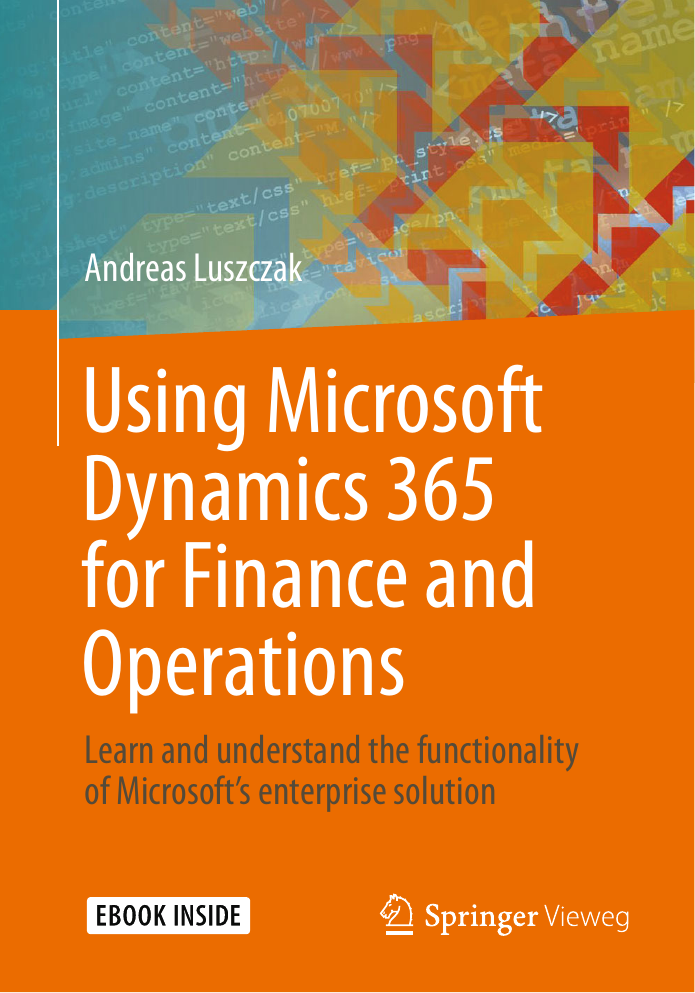
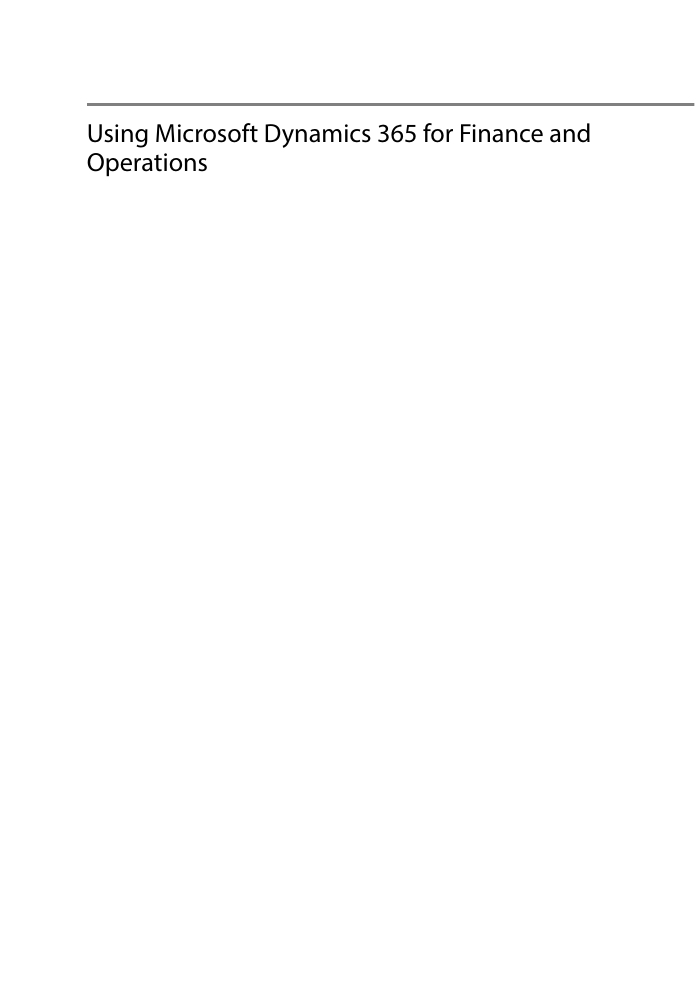
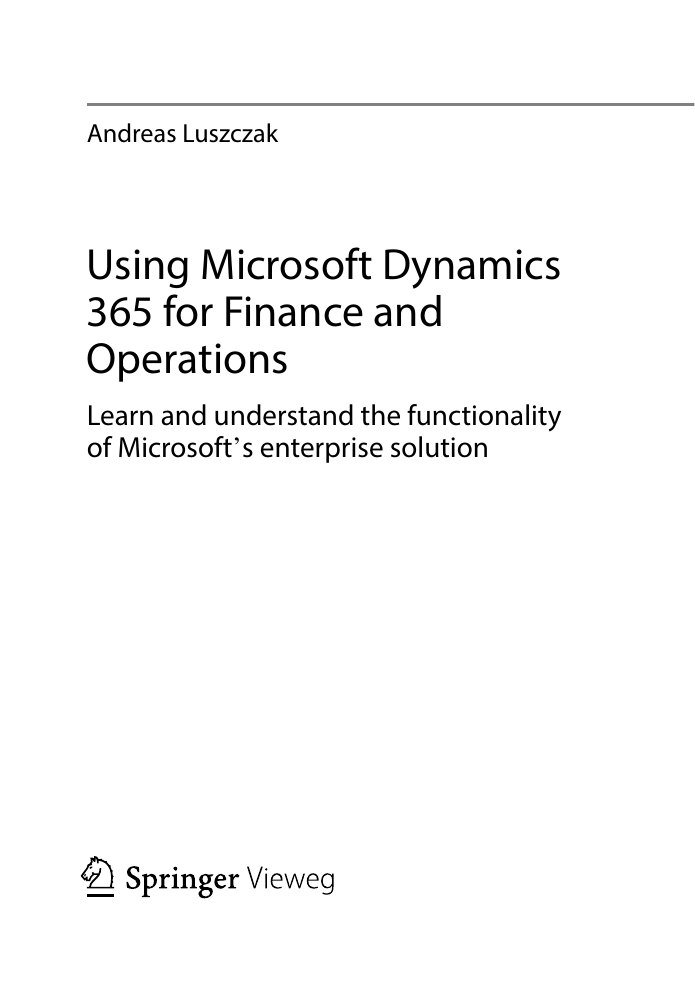
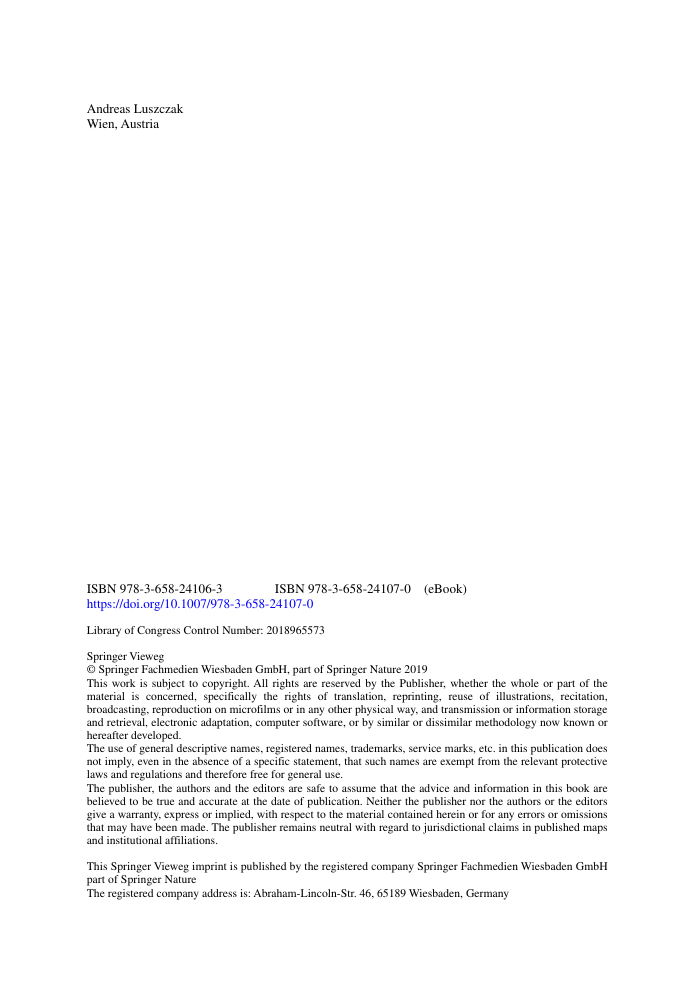

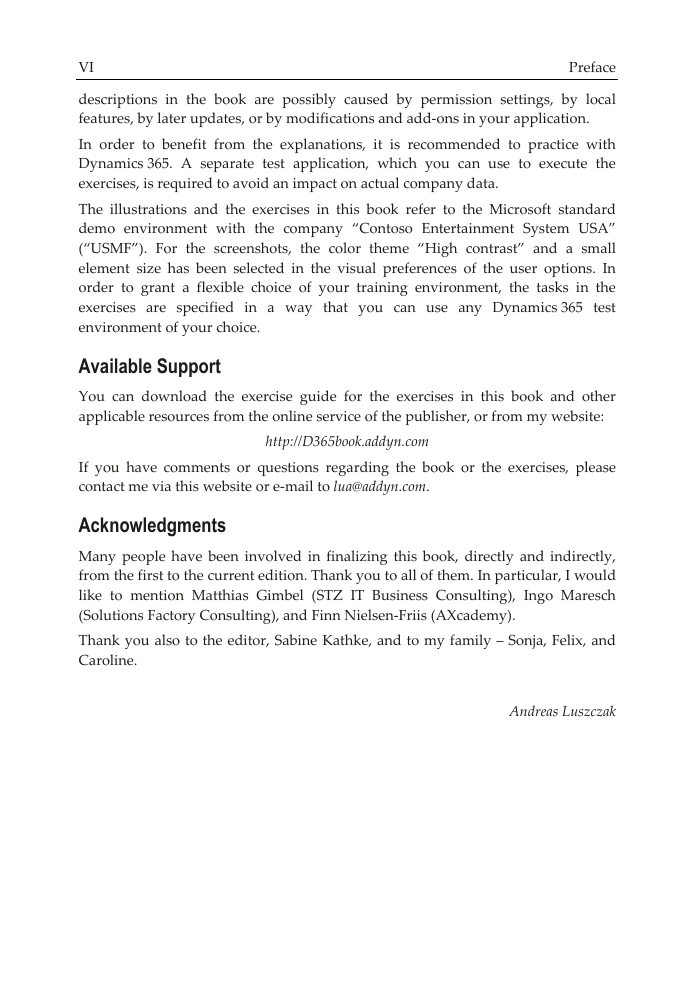
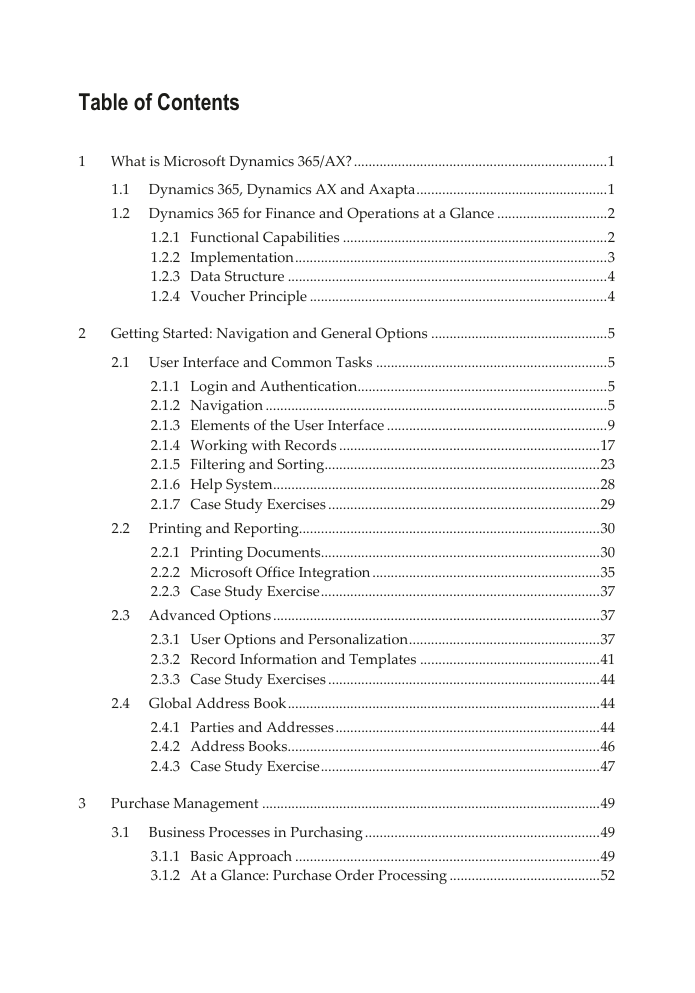
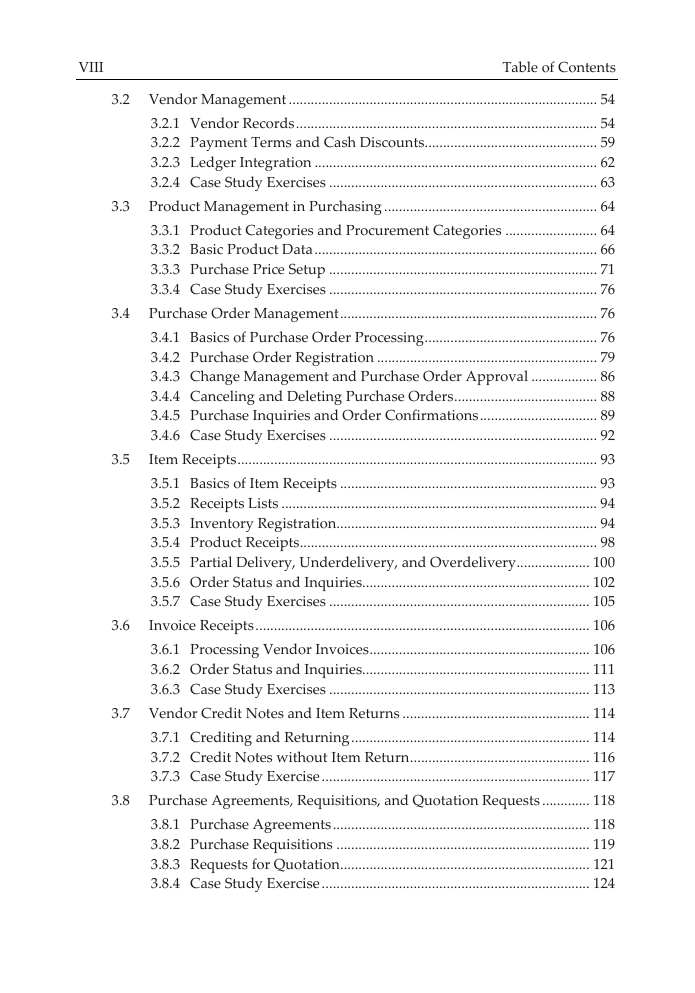








 2023年江西萍乡中考道德与法治真题及答案.doc
2023年江西萍乡中考道德与法治真题及答案.doc 2012年重庆南川中考生物真题及答案.doc
2012年重庆南川中考生物真题及答案.doc 2013年江西师范大学地理学综合及文艺理论基础考研真题.doc
2013年江西师范大学地理学综合及文艺理论基础考研真题.doc 2020年四川甘孜小升初语文真题及答案I卷.doc
2020年四川甘孜小升初语文真题及答案I卷.doc 2020年注册岩土工程师专业基础考试真题及答案.doc
2020年注册岩土工程师专业基础考试真题及答案.doc 2023-2024学年福建省厦门市九年级上学期数学月考试题及答案.doc
2023-2024学年福建省厦门市九年级上学期数学月考试题及答案.doc 2021-2022学年辽宁省沈阳市大东区九年级上学期语文期末试题及答案.doc
2021-2022学年辽宁省沈阳市大东区九年级上学期语文期末试题及答案.doc 2022-2023学年北京东城区初三第一学期物理期末试卷及答案.doc
2022-2023学年北京东城区初三第一学期物理期末试卷及答案.doc 2018上半年江西教师资格初中地理学科知识与教学能力真题及答案.doc
2018上半年江西教师资格初中地理学科知识与教学能力真题及答案.doc 2012年河北国家公务员申论考试真题及答案-省级.doc
2012年河北国家公务员申论考试真题及答案-省级.doc 2020-2021学年江苏省扬州市江都区邵樊片九年级上学期数学第一次质量检测试题及答案.doc
2020-2021学年江苏省扬州市江都区邵樊片九年级上学期数学第一次质量检测试题及答案.doc 2022下半年黑龙江教师资格证中学综合素质真题及答案.doc
2022下半年黑龙江教师资格证中学综合素质真题及答案.doc